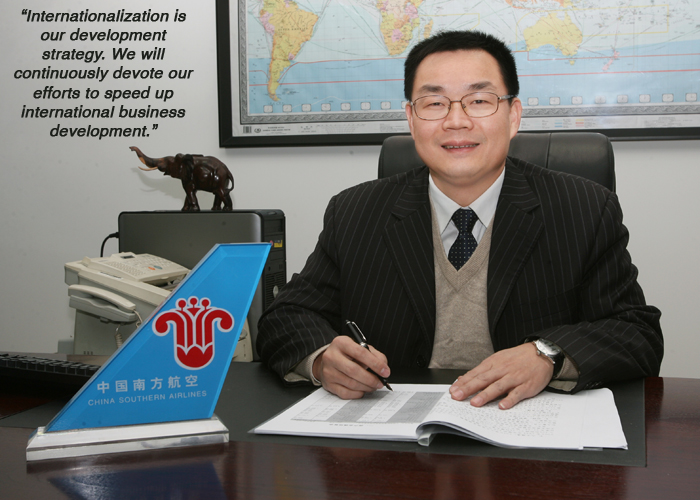Finnair
To HEL And Back
 The
only carrier flying directly to North Europe from India, Finnair has
gone a step ahead to add muscle to its India operation with the launch
of its first once-a-week freighter service from Mumbai to Helsinki. The
only carrier flying directly to North Europe from India, Finnair has
gone a step ahead to add muscle to its India operation with the launch
of its first once-a-week freighter service from Mumbai to Helsinki.
Announcing the launch of the service,
Pertti Mero, Finnair Cargo’s Vice President (Global Sales), commented
that the service was started because the carrier’s customers felt
that there was a great need for cargo capacity, especially between the
Nordic countries and Mumbai.
Finnair will operate the cargo service
in co-operation with the recent set up Helsinki-based, all-cargo airline,
Nordic Global Airlines Ltd. (while the U.S.-based Neff Capital Management
holds a majority stake in the carrier, Finnair Cargo and Finnish insurer,
Ilmarinen Mutual Pension Insurance Company, are minority shareholders).
The plane will be a MD-11F.
 NGA is based at Helsinki-Vantaa airport, Finnair Cargo’s hub,
and it has already charted out its routes, which are concentrated mostly
on the Helsinki-Asia and Helsinki-North America sectors.
NGA is based at Helsinki-Vantaa airport, Finnair Cargo’s hub,
and it has already charted out its routes, which are concentrated mostly
on the Helsinki-Asia and Helsinki-North America sectors.
The service is also in line with the Finnair
cargo unit’s business strategy to first attain the top position
in the Nordic countries and become the “desired option in transit
traffic between Asia and Europe.” In fact, the majority shareholder
in the start-up cargo airline, Brian Neff, (left) President of Neff
Capital, said: “We believe that Helsinki is a natural base for
a wide-body freighter operation, given its proximity to Asia and location
among the growing economies of Europe.”
Finnair started the Mumbai freighter service
after receiving good response from the cargo community, despite the
global recession. Its passenger flights from Delhi to Helsinki have
been seeing good loads in belly cargo—a large part of which is
bound for northern Europe and the CIS (Commonwealth of Independent States)
countries.
 According to Kuldip Singh Kharayat, (right)
Area Director India and Subcontinent, Finnair Cargo, “Cargo loads
out of Delhi have been high. Each flight can take 20 tons of cargo along
with a full load of passengers and we have been able to utilize most
of the space on each flight.”
According to Kuldip Singh Kharayat, (right)
Area Director India and Subcontinent, Finnair Cargo, “Cargo loads
out of Delhi have been high. Each flight can take 20 tons of cargo along
with a full load of passengers and we have been able to utilize most
of the space on each flight.”
Incidentally, the carrier, has a pact
with the Vijay Mallya-led Kingfisher Airlines for domestic connectivity
and saw a whopping 11.1 per cent increase in its scheduled passenger
traffic in August.
According to Kari Stolbow, ( below left)
Sales Director, Indian Subcontinent for Finnair, though passenger and
cargo from Asia have played a lead role in increasing Finnair’s
business, “We have seen very good growth in every segment in India.”
 Finnair offers morning connections from
Delhi to its European network of 60 cities and its tie-up with Kingfisher
has been seeing passenger and cargo loads coming from Mumbai, Bangalore,
Pune, Hyderabad, Chennai, Jaipur and Ahmedabad. Of these, Chennai, with
its Nokia factory, is a major source for high-value cargo to Helsinki
and beyond. Mumbai too, has huge cargo potential. The financial capital
of India, the city and its suburbs are industrial hubs producing garments,
footwear, leather accessories and pharmaceuticals.
Finnair offers morning connections from
Delhi to its European network of 60 cities and its tie-up with Kingfisher
has been seeing passenger and cargo loads coming from Mumbai, Bangalore,
Pune, Hyderabad, Chennai, Jaipur and Ahmedabad. Of these, Chennai, with
its Nokia factory, is a major source for high-value cargo to Helsinki
and beyond. Mumbai too, has huge cargo potential. The financial capital
of India, the city and its suburbs are industrial hubs producing garments,
footwear, leather accessories and pharmaceuticals.
The outbound from Helsinki will be bringing
in telecom, electronic goods and equipment. As for the Helsinki-Delhi
route, there is demand of infrastructure-related goods from North Europe
to India, Kharayat said.
Speaking on the advantages of using Finnair,
Kharayat pointed out that “with Helsinki as a hub, Finnair has
the shortest flying distance from India to northern Europe. Flying cargo
on Finnair makes good sense also because Finnair has very good onward
connectivity.”
Finnair Cargo has performed creditably
and recorded good results in April-June 2011, as per the Finnair Group
Interim report (January 1-June 30, 2011). While cargo sales grew by
18 percent in the second quarter, available ton kilometers grew by 21.5
percent and revenue ton kilometers by 16.1 percent. In addition to the
launch of the Singapore route and additional flights to Hong Kong, cargo
aircraft traffic that began in spring 2010 also contributed positively
to Finnair Cargo's growth figures during the first half of the year.
Over the next few years, Finnair would
like to reach more Indian destinations. It could do very well with a
connection to Chennai (Finnish telecom giant Nokia has its India manufacturing
facilities at Sriperimbudur, on the outskirts of Chennai), but it cannot
do so because of the present bilateral arrangement.
The Indo-Finn air services agreement only
allows Finland to connect with two India cities: Delhi and Mumbai.
Tirthankar Ghosh
|






